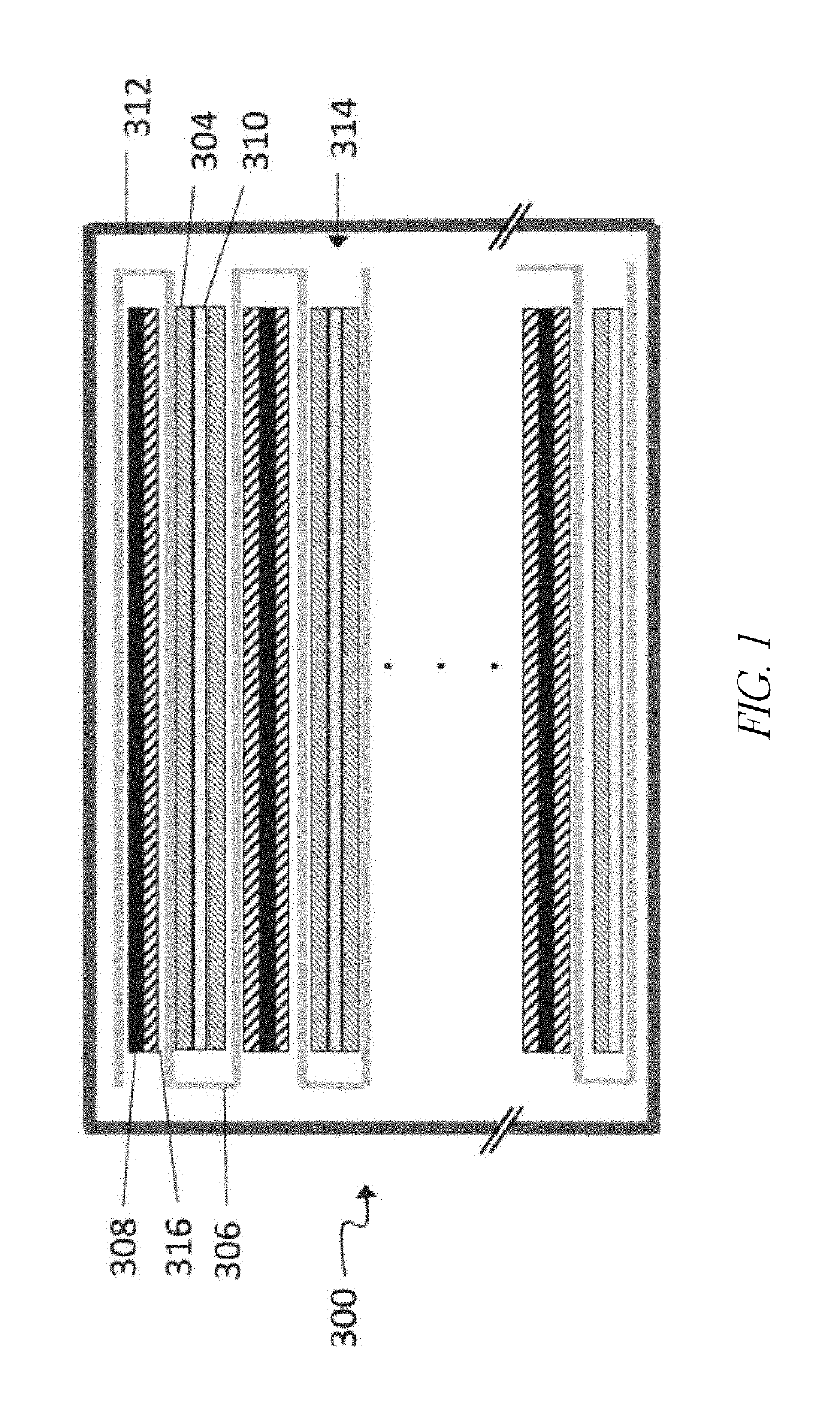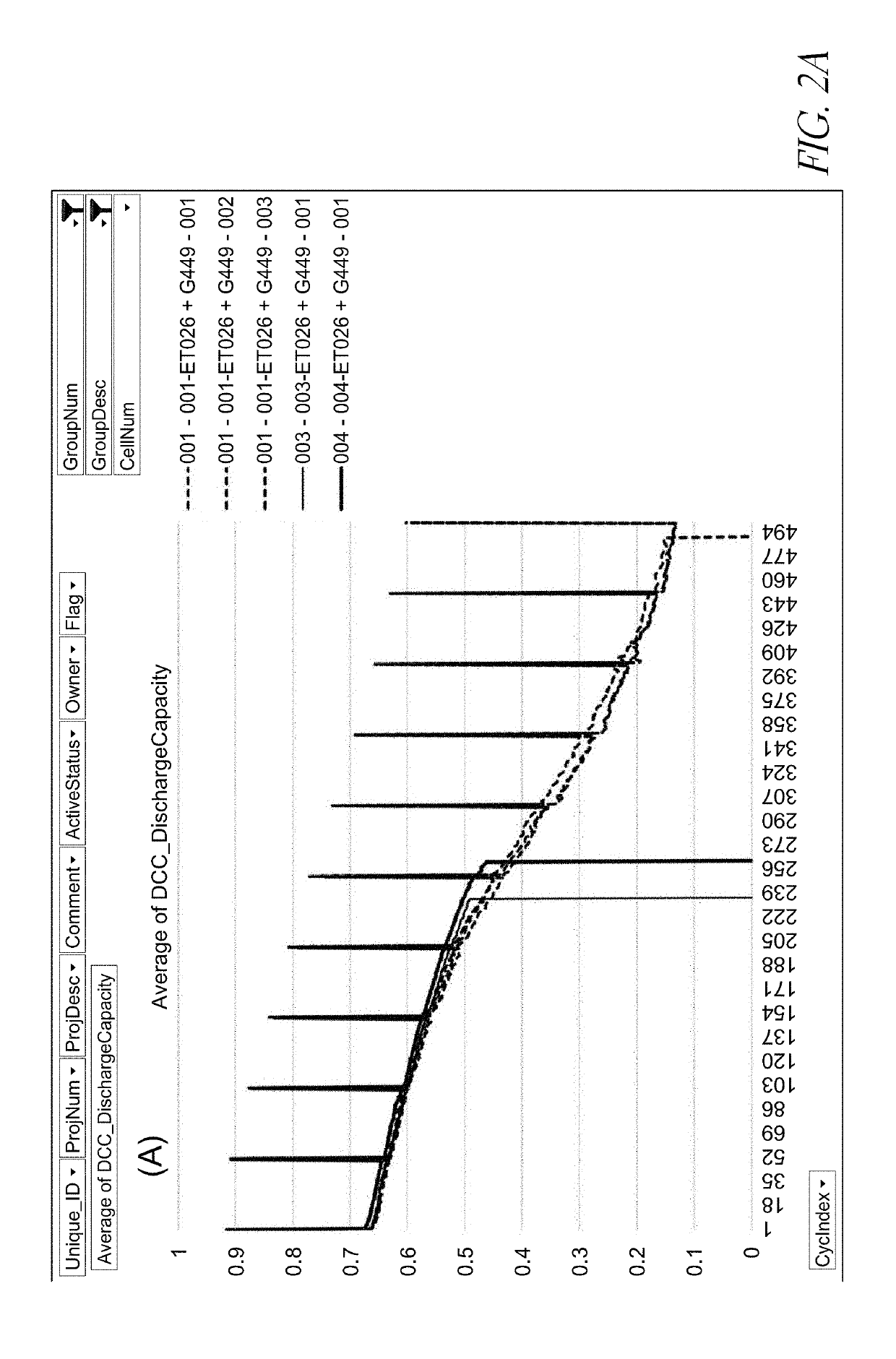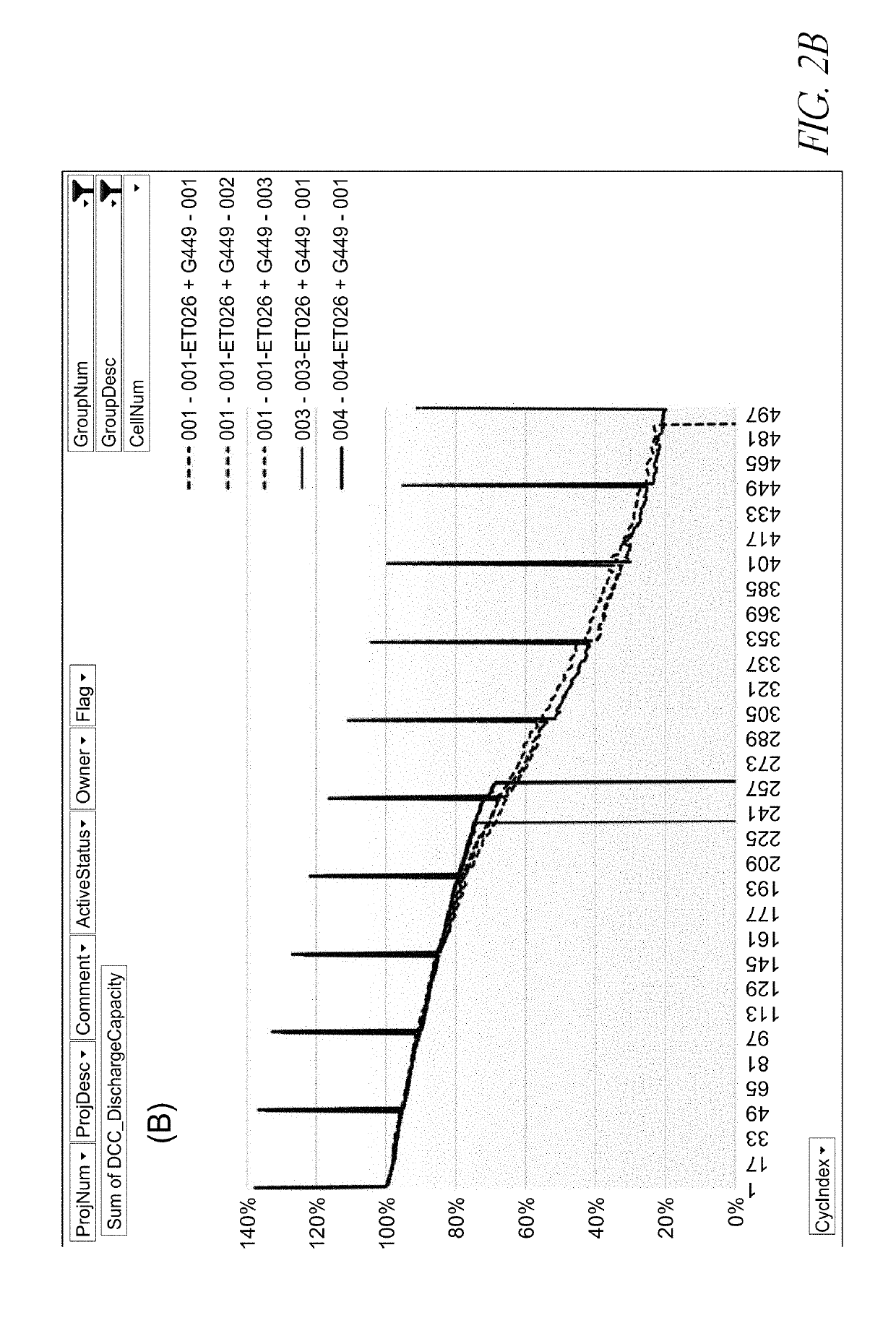Silicon-based energy storage devices with fluorinated polymer containing electrolyte additives
a technology of fluorinated polymer and energy storage device, which is applied in the direction of electrolytes, hybrid capacitor electrolytes, cell components, etc., can solve the problems of loss of electrical conduction paths, unable to achieve long-term cycling stability of high-si anodes paired with ncm or nca cathodes or lco cathodes, and difficult to achieve long-term cycling stability
- Summary
- Abstract
- Description
- Claims
- Application Information
AI Technical Summary
Benefits of technology
Problems solved by technology
Method used
Image
Examples
example 1
[0090]The batteries shown in FIGS. 2A-4B comprise a Si-dominant anode and a LiCoO2 cathode. The Si-dominant anodes contain about 80 wt % Si, 5 wt % graphite and 15 wt % glass carbon (from resin), and are laminated on 15 μm Cu foil. The average loading is about 3.8 mg / cm2. The average loading is about 3.8 mg / cm2. The cathodes contain about 97 wt % LiCoO2, 1 wt % Super P and 2 wt % PVDF5130, and are laminated on 15 μm Al foil. The average loading is about 28 mg / cm2. The electrolytes of the control cells contain 1M LiPF6 in FEC / EMC (3 / 7 wt %). The electrolytes of the cells of one embodiment contain 1M LiPF6 in FEC / EMC (3 / 7 wt %) and an electrolyte additive of 1.83 wt % PHFPO with an average Mn of about 2,000. The electrochemical tests were carried out at 0.5 C / 0.5 C charge / discharge processes with the working voltage window of 3.3V-4.3V.
[0091]For the tests shown in FIGS. 2A-4B, the long-term cycling conditions for control cells include: (i) At the 1st cycle, charge at 0.5 C to 4.3 V fo...
example 2
[0098]In other embodiments not shown, the electrolytes of the cells comprise Si-dominant anodes and LiCoO2 cathodes with 1M LiPF6 in FEC / EMC (3 / 7 wt %) and 0.5 wt %, 1 wt %, 2 wt %, or 3 wt % PHFPO with average Mn of about 2,000. The electrochemical tests were carried out at 1 C / 0.5 C charge / discharge processes with the working voltage window of 3.3V-4.3V. In other embodiments not shown, the electrolytes of the cells comprise Si-dominant anodes and LiCoO2 cathodes with 1.2 M LiPF6 in FEC / F2EC / EMC (1 / 1 / 8 vol %) and 0.5 wt %, 1 wt %, 2 wt %, and 3 wt % PHFPO with an average Mn of about 2,000 as electrolyte additives in. The electrochemical tests were carried out at 1 C / 0.5 C charge / discharge processes with the working voltage window of 3.3V-4.3V. These examples also demonstrated improved battery functions when PHFPO was used as an additive as compared to controls.
PUM
| Property | Measurement | Unit |
|---|---|---|
| diameter | aaaaa | aaaaa |
| diameter | aaaaa | aaaaa |
| diameter | aaaaa | aaaaa |
Abstract
Description
Claims
Application Information
 Login to View More
Login to View More - R&D
- Intellectual Property
- Life Sciences
- Materials
- Tech Scout
- Unparalleled Data Quality
- Higher Quality Content
- 60% Fewer Hallucinations
Browse by: Latest US Patents, China's latest patents, Technical Efficacy Thesaurus, Application Domain, Technology Topic, Popular Technical Reports.
© 2025 PatSnap. All rights reserved.Legal|Privacy policy|Modern Slavery Act Transparency Statement|Sitemap|About US| Contact US: help@patsnap.com



